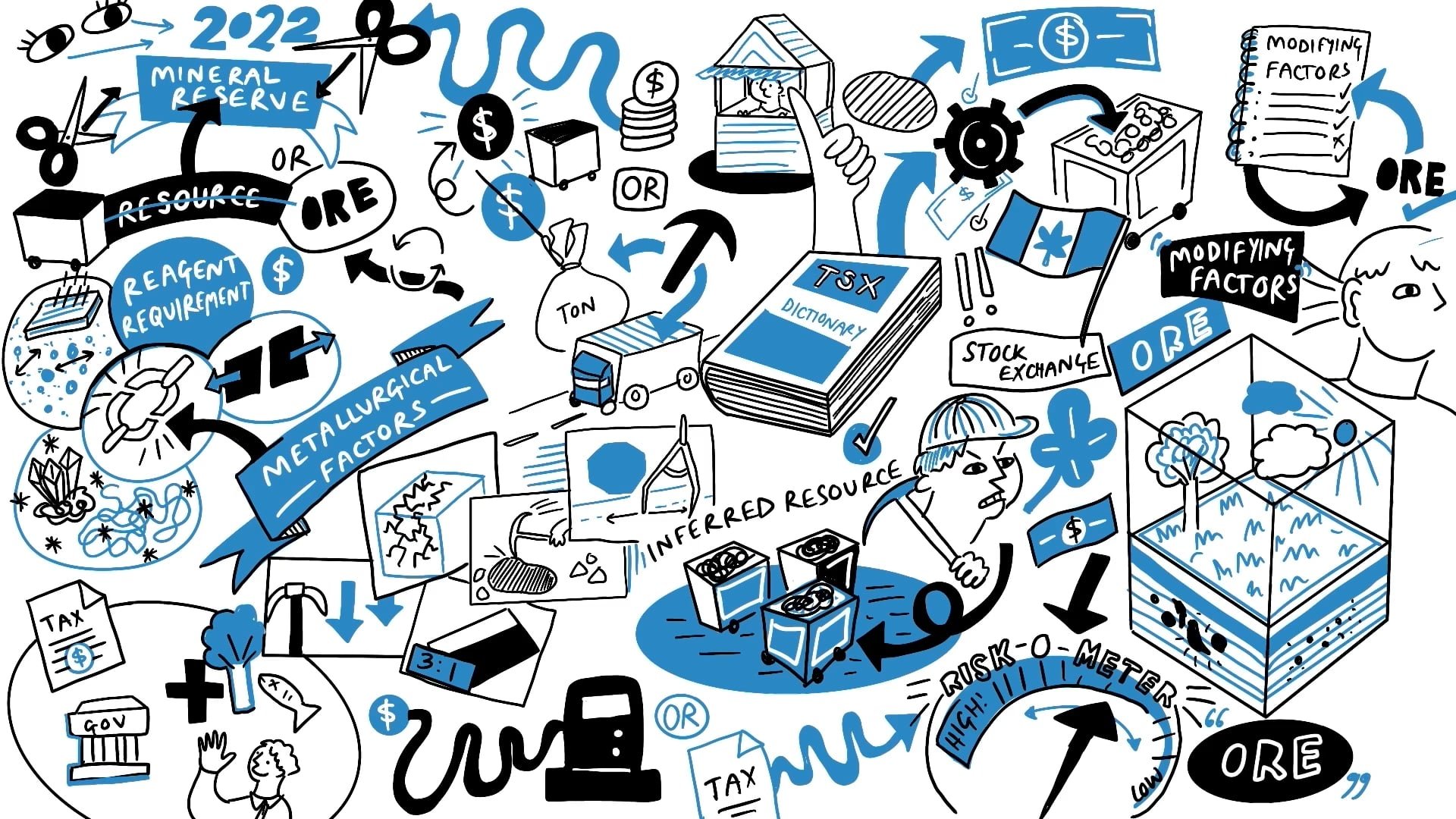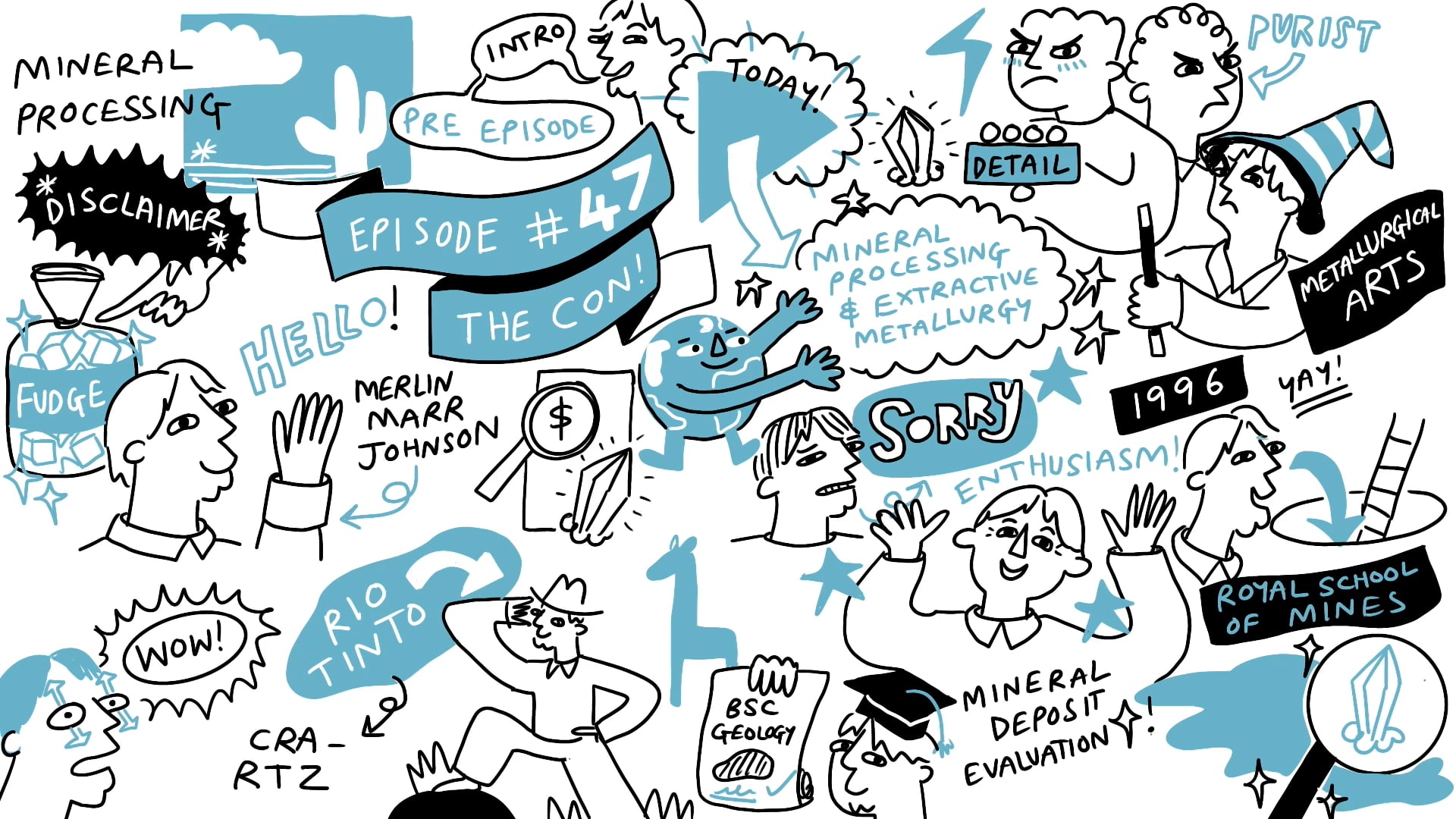Technical Studies: JORC Resource Reports, PEA & PFS

More episodes
Transcript
I think it’s really important to remember the point of mineral exploration companies, the purpose of mining companies, the key objective is always to mine ore commercially, or rather that’s the end goal. You’re trying to make a profit on the resource in the ground. You’re trying to take it out and add a profit, and in order to do that you have to be able to delineate it and then build an infrastructure around it so that you can actually create a mine or an extraction solution, and then you need to get it out of the ground. In order to do that, you have to gradually de-risk it.
One of the things we’ve spoken about in a previous episode of The Con was resources, how you define resources and how you de-risk the understanding of what you’ve got in the ground through drilling and sampling and a whole range of other work. What you’re essentially trying to do is improve your confidence and your knowledge about a specific block of materials that you can get an answer at the end, which is grade and tonnes.
Now, as you walk up that confidence curve in the resources space from an exploration target to inferred resources, to indicated and measured, and then eventually you get to proven and probable reserves, what you’re essentially doing, a key part of that is understanding the modifying factors that wrap around your volume of rock in the ground. You apply the modifying factors that influence how it’s going to come out of the ground. Of course, those include mining, processing, extraction technologies, the logistics, the transport, environmental aspect, rehabilitation, and the human elements of who is living where relative to the resource, the marketing, the commercial, the legal. There is a whole plethora of factors that influence whether a specific tonne of rock under the ground can be taken out of the ground at a profit.
JORC Resource Report
The resources categories feather in and they work with the technical studies. What you’re trying to do is to de-risk and understand the best way to get your resource out of the ground. Once again, one of the best places to get an understanding of the differences in the ranking of your technical studies is the JORC resource code. It’s actually clearer than some of the other classifications. If you go to the JORC resources code from 2012 and its various updates, which can be found on the JORC website, it has a section, section 37 more or less, 37 - 40, talking about technical studies. It’s quite short. It introduces a Scoping Study, a Preliminary Feasibility Study, and a Feasibility Study. In Australia, they call them Scoping Studies, which is the first study that a company will do. In Canada, they’re typically referred to as a Preliminary Economic Analysis or PEA.
Under the JORC code, a Scoping Study is defined as being ‘an order of magnitude technical and economic study of the potential viability of mineral resources.’ It’s just looking at the potential viability of something. It’s looking at roughly how are we going to get this out of the ground, and how is this going to work. I’m going back to the text now, ‘it includes appropriate assessments of realistically assumed modifying factors.’ Those modifying factors that I spoke about earlier. ‘Realistically assumed modifying factors together with any other relevant operational factors that are necessary to demonstrate at the time of reporting that progress to a Pre-Feasibility Study could be reasonably justified.’ In other words, it’s a realistic application of all of those things; the mining, the processing, the logistics, the environment, the human - whether it’s underneath a town, for example, the marketing, the commercial. Apply all of those and it spits out an answer on the resource that you’ve got. Is it going to make a lot of money because if it isn’t, you’re going to have to either do more geology or walk away?
The code has got another little paragraph afterwards, notes saying that, ‘Scoping Studies are commonly the first economic evaluation of a project undertaken and may be based on a combination of directly gathered project data, together with assumptions borrowed from seminal deposits or operations.’ It goes on to say, ‘They are commonly used internally by companies for comparative and planning purposes.’ It’s got a few warnings to say that this isn’t an advanced study, this is not ore reserved, this isn’t an absolute confirmation that this is economic. It’s just a first glance. And there is absolutely no indication that this is an ore reserve, which is anything that can come out of the ground with any level of guarantee.
Pre-Feasibility Studies
The code then goes on to talk about Preliminary Feasibility Studies, or Pre-Feasibility Studies, or PFS. Now, this is a comprehensive study of a range of options. It’s a range of options, so it looks in detail at a number of different scenarios of how something can be taken out of the ground. It’s a great comparison. Imagine you’ve got an orebody, which has mineralisation starting at 70m below ground, but it’s good mineralisation at that point, do you strip back a lot and create a big open-pit, but you’ve got to carry $20M - $30M worth of stripping beforehand or do you put a portal down and go underground? It’s the analysis of what is the best mining method. Is it open-pit or underground? Is it a hybrid? If you’re going to be building an underground mine, why don’t you just cut out the middleman, forget the open-pit, and just go straight for the underground? Oh, but maybe there’s some low-grade material at surface that we could process through a heap leach. Okay, well on that point, you might need to have a separate processing thing at the front but is the capital really worth it? All of these kinds of discussions should be sorted out at the PFS level. It’s a study of a range of options for the technical and economic viability of a mineral project that has advanced to a stage where a preferred mining method in the case of underground mining, or the pit configuration in the case of open-pit, is established and an effective method of mineral processing is determined.
That’s a little bit ambiguous actually because having worked in companies, there’s always that discussion of what is the best way to get this project out of the ground. When you study these things, you’re applying the modifying factors and all of that has to be layered on top of your geology, and you have to really stop talking about generalities and start getting down to specifics and work out what is going to create the best NPV and what is the most viable. You might have something with a better NPV but actually, it’s not practical. This is where the experience of the board and the consultants will come in.









































.jpg)
.jpg)
.jpg)
.jpg)















